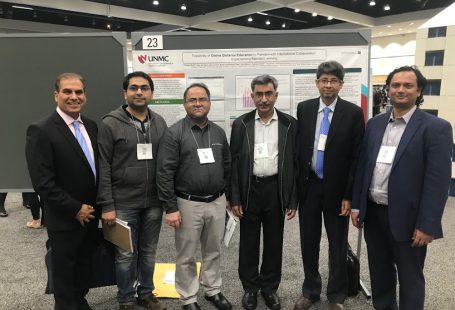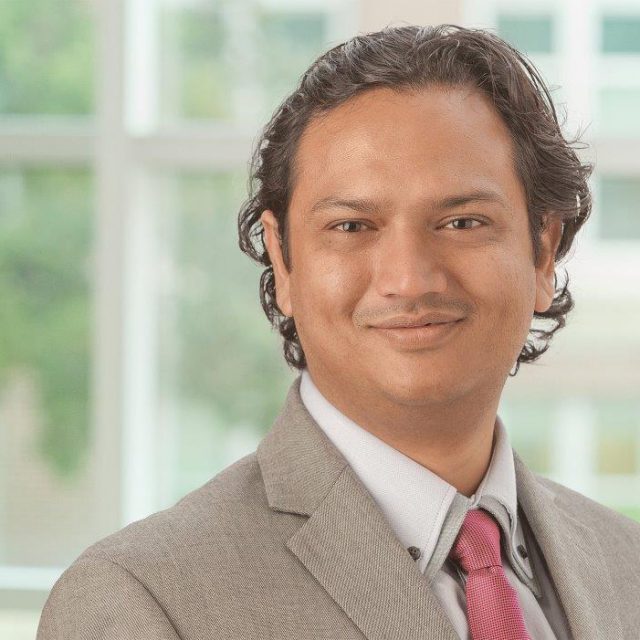
Teachers Need Real Feedback.
Most teachers love to teach but how do we tell them where are they doing a good job and where they can improve.
And how do you know when the learning has occurred.

The current understanding in education is that 4 proper learning student it is important to understand what is learning and how is learning. The burden of learning is traditionally been on the student and the teachers considered it student fault if they are lagging behind this Mechanism of learning does not create good teachers. For any teacher to be effective he needs to know how he’s been understood And what is being retained.
If we teach today’s students as if we taught yesterday, we rob them of tomorrow – John Dewey (Philosopher, Educator)

Clearly the traditional seminar-style teaching has worked in the past and continues to work. end the current suggestions are not intended to challenge traditional teaching but only to build up on them. What we are trying to understand what makes a great teacher a great teacher and what makes a good student a really good student. What we are trying to say is that every teacher can be a great teacher and every student can be a really good student why should learning be a challenge. And that’s where the online teaching tools come into play. However adopting new methods of teaching is not easy and requires a paradigm shift. It is not easy in the advanced countries where education has been evolving constantly over the last two three decades. even at University of Nebraska Medical Center 74% of the faculty are not comfortable In using technology at campus. And this number has not changed in last 15 years.
Learning is not DONE to students.
Learning is a PROCESS.
The Person who does the WORK does the learning.
If we look at standard checklist for new teaching methods such as flip learning (https://danishbhatti.com/?p=46) there is little if any stress on the technology to use for such methods and more stress is on a culture change. The ones that checklist talked about flexible and Waterman where teacher continually observe and monitor student to make adjustments as appropriate and provide students different ways to learn content rather than one single approach. Similarly there is focus on giving Stern opportunities for activities or engagement and providing self-paced learning, curating and creating relevant content for the student to use on their own, interacting with students regularly understand their grasp of knowledge that is formative assessment. (table Checklist for flip learning)
Current education research highlights the following 7 evidence-based principles of student center learning:
- Students’ prior knowledge can help or hinder learning.
- How students organize, knowledge influences how they apply knowledge.
- Students Motivation determines what they do to learn.
- To develop mastery, students must acquire component skills, practice integrating the and know when they can apply what they have learned. Mastery= skills + Practice + Application
- Goal-directed practice coupled with targeted feedback enhances quality of student learning. Learning Goal, students need to know the specific learning goal (objective).
- Students current level of development interacts with climate of the course to impact learning.
- To become self-directed learners’ students must learn to monitor and adjust their approaches to learning.
USING ONLINE EDUCATION FOR RESIDENTS
To explore the benefit of using complement of online education for residents training we developed a short five week course on movement disorder in form of Blended learning. Residents were scheduled to receive once a week educational movement disorders for 5 weeks in traditional didactics Is a single 12 hour lecture once a week. We developed an online course to compliment that we clear that you’re using our learning management system platform of CANVAS. A learning management system (LMS) is an online platform that offers various tools to provide education using above mentioned principles. A LMS provides the flexibility of self paced learning and benefits of formative assessments to guide the learning in an interactive way. It provides the flexibility of various learning approaches to the same group. It offers detailed insight into student performance and reports their involvement and activity.
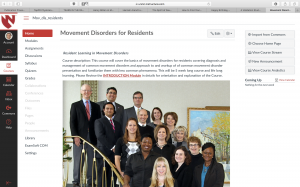
Neurology residents participated in a 5-week blended learning course including traditional face-to-face weekly lecture and online materials using Canvas learning management system. Coursework included weekly modules with required and optional reading material, task assignments (such as mind map, memory matrix), formative quizzes, discussion forums, twitter feeds and podcast. Course performance was evaluated with blinded pre-test and post-test questionnaire. Of 16 residents 15 completed pre-test and 11 completed post-test for evaluation.
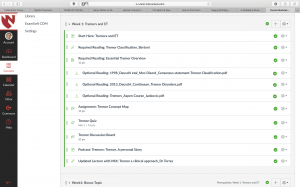
There were 5777 online page views over 5 weeks (mean 385/resident, range 32-1319). Residents made 167 submissions with timely submission rate of 55% (CI 37-73, range 0-100%), completed 5 weekly quizzes with average score of 65.9% overall as a group (range 58.9-71.3%). There were 86 responses posted within 12 discussion topics.

Eleven residents completed post-test with 100% showing an improvement on the score (average 23.8% CI 20.4-27.2, range 10-46%). Pre-test score average was 41% (n=15, range 2-72%) and post-test score average was 72.7% (n=11, range 48-86%). Combined Score for all assessments (total 410) for all 15 residents was 35.8% on average (mean 147, CI 113-180, range 1.2-80.8%) showing large spread of results due to variable participation. Improvement on post-test scores (n=11) show a correlation with timely assignment submission (coefficient 0.52, CI 0.6 to -0.11), weekly quiz scores (coefficient 0.5, CI 0.6 to -0.14) and number of page views (coefficient 0.48, CI 0.6 to -0.16).
Blended learning is a feasible and effective for training neurology residents. Online tracking allows formative assessment and detailed performance analysis. Factors influencing resident participation and adoption require further study.
ONLINE EDUCATION IN PAKISTAN
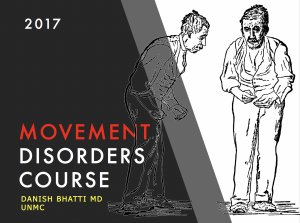
To explore the feasibility of online teaching tool especially for distance learning we designed and complete completed of 6 months online course on movement disorders for neurologist. Fellowship neurologist in Pakistan in a gap exist who trained General neurologist better in movement disorders such as Parkinson’s disease, tremor and dystonia Etc. The course was conducted in partnership with Pakistan Society of Neurology and movement disorders Society of Pakistan. We selected 20 participants out of 39 applicants for this pilot project. 7 of these 20 participants were in their residency training while 13 were practicing neurologists with average duration since graduation of 1.35 years. The participants were selected from 8 cities end 14 institutions.
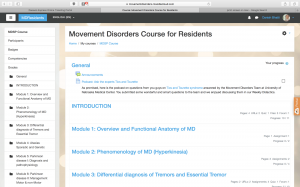
The online course was built in a learning management system namely Moodle and hosted on a free Cloud Server. the learning management system such as Moodle Allows for various components Within the course to enhance the learning of the participants based on the principles discussed above. The six-month course was divided into 12 modules with each module lasting for 2 weeks and each model discussing specific topic. Each module with a specific structure that included an introduction, recorded video lectures with PowerPoint lights, required reading materials and optional reading materials, quiz and task assignment. we also included a podcast in each module.
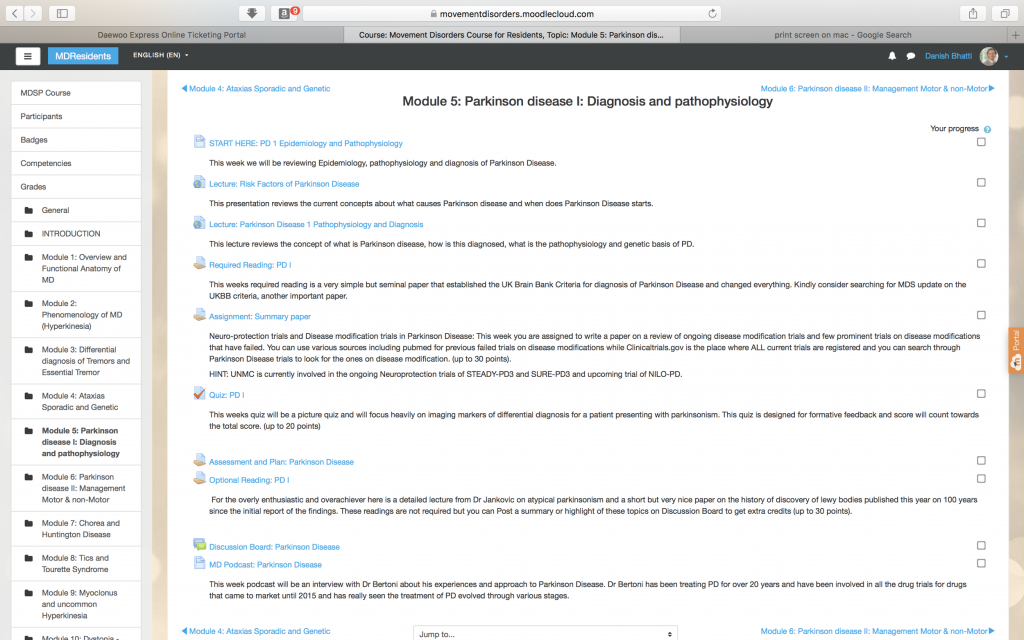
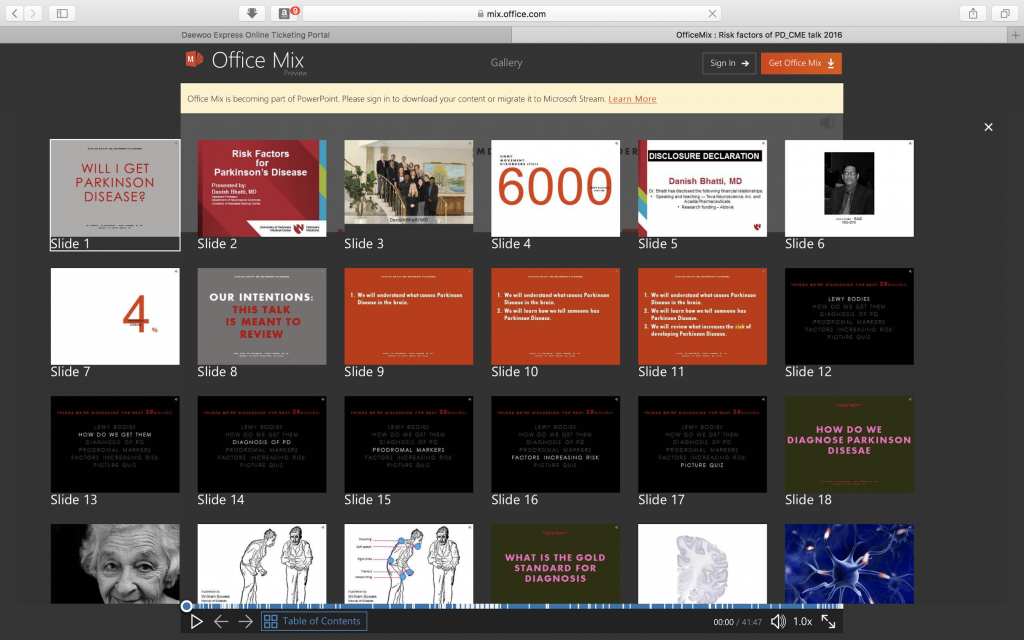
Patient cases were discussed routinely and every module participants submitted assessments and plan for a real case for grading. Whatsapp was used as the primary platform for discussion. Participants also submitted summary of the reading material for grading. Each module they were given an assignment to complete that varied in each module such as Concept map, memory matrix etc.
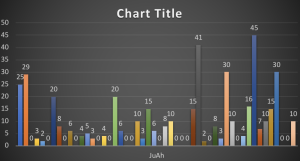
18/20 participants completed the online course (90% retention rate). A total of 9098 page views were recorded online excluding quizzes (each question requiring a page view by each participant) and 5714 page views were required for all the quizzes (including pre and post test) or an average of 285 questions for each participant throughout the course. And average page view of 455 per participant over 24 weeks.
WhatsApp remained the dominant medium of discussion and communication in the group. Total number of messages sent are text 1186, photos 23, Videos 64, voice messages 28 and 31 documents. A total of 41 assignments and quizzes were conducted throughout the course including both required and optional assignment (excluding pre and post test). Participants completed on average 32/33 required assignments (97%, range 29-33) and 4.6/9 optional assignments (51%, range 1-9).
Overall average improvement of 31% total (range 2%-54%) is noted for the group or 162% over original score on average (range 8%-360%). Pre-test score average is 43% (range 26%-58%) and post test score is74% (range 50%-88%). 14/18 people have more than 25% total improvement.
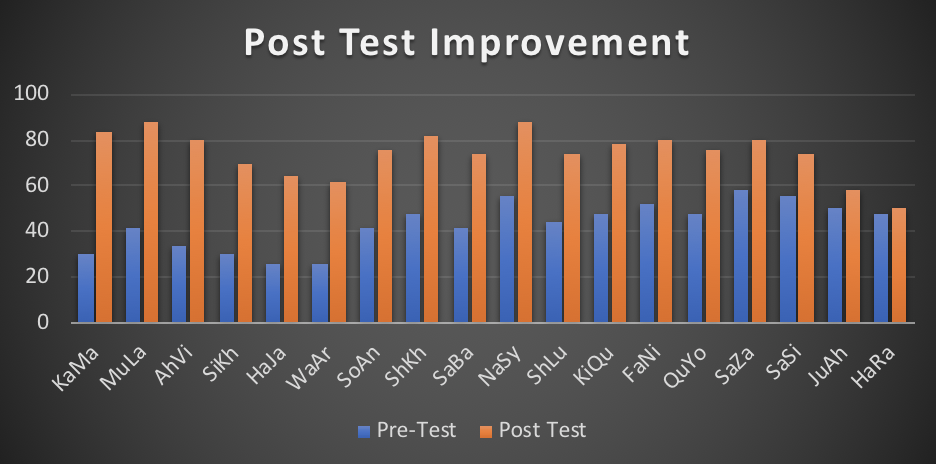
A strong 71% correlation was found in the total score in the course and the number of optional assignments completed. Similarly, a significant positive correlation was found (30%) between number of optional assignments completed and improvement in the post-test score which is even more significant as there was no correlation between the actual post test score and optional assignments. A negative correlation was found between pre-test score and the optional assignments completed of -31%. A weaker but positive correlation of 14% was also found between total course score and the post test improvement.
“If you do not change directions, you may end up where you are heading”. _Lao Tzu
Note:
Some more discussion on the education and teaching transformation can be seen here.
https://sway.com/AGFne6ZRroy0kKGr?ref=Link

